-
EXECUTIVE SUMMARY 22
-
MARKET INTRODUCTION 25
-
DEFINITION 25
-
SCOPE OF THE STUDY 25
-
RESEARCH OBJECTIVE 25
-
MARKET STRUCTURE 26
-
RESEARCH METHODOLOGY 27
-
OVERVIEW 27
-
DATA FLOW 29
- DATA MINING PROCESS 29
-
PURCHASED DATABASE: 30
-
SECONDARY SOURCES: 31
- SECONDARY RESEARCH DATA FLOW: 32
-
PRIMARY RESEARCH: 33
- PRIMARY RESEARCH DATA FLOW: 34
- PRIMARY RESEARCH: NUMBER OF INTERVIEWS CONDUCTED 35
- PRIMARY RESEARCH: REGIONAL COVERAGE 35
-
APPROACHES FOR MARKET SIZE ESTIMATION: 36
- REVENUE ANALYSIS APPROACH 36
-
DATA FORECASTING 36
- DATA FORECASTING TECHNIQUE 37
-
DATA MODELING 37
- MICROECONOMIC FACTOR ANALYSIS: 37
- DATA MODELING: 38
-
MARKET DYNAMICS 41
-
OVERVIEW 41
-
DRIVERS 42
- RISE IN USE OF SMART CONNECTED DEVICES 42
- INCREASE IN SHIFT TOWARDS CLOUD BASED DATA 42
- NEED FOR EFFICIENT MANAGEMENT AND AUTOMATION OF BUSINESS PROCESSES 43
-
RESTRAINTS 44
- ISSUE REGARDING SECURITY AND DATA BREACH 44
- HIGH IMPLEMENTATION COSTS AND COMPLEXITY 45
- ISSUE WITH RESPECT TO DATA CONSISTENCY AND INTEROPERABILITY ACROSS DIFFERENT EDGE PLATFORMS 45
-
OPPORTUNITIES 46
- GROWTH IN SMART CITY PROJECTS 46
- RISING DEMAND FROM VARIOUS INDUSTRY VERTICALS 47
- INTEGRATION WITH EMERGING TECHNOLOGIES SUCH AS AI AND BLOCKCHAIN 48
-
CHALLENGES: 49
- LACK OF TECHNICAL EXPERTISE 49
- LATENCY AND BANDWIDTH LIMITATIONS 50
-
IMPACT ANALYSIS OF COVID-19 50
- IMPACT ON VENDORS WORLDWIDE 50
- IMPACT ON IOT SERVICE 51
- IMPACT ON IT INDUSTRY 51
- COVID-19 IMPACT ON SUPPLY CHAIN DELAYS 52
-
MARKET FACTOR ANALYSIS 53
-
SUPPLY CHAIN ANALYSIS 53
- DEVELOPMENT AND SOURCING 53
- DEPLOYMENT AND CONFIGURATION 54
- OPERATION AND MAINTENANCE 54
- END-USER 54
- EVOLUTION AND INNOVATION 54
-
PORTER''S FIVE FORCES MODEL 55
- THREAT OF NEW ENTRANTS 55
- BARGAINING POWER OF SUPPLIERS 56
- THREAT OF SUBSTITUTES 56
- BARGAINING POWER OF BUYERS 56
- INTENSITY OF RIVALRY 56
-
TRENDS 57
- ADOPTION OF IOT 57
- GROWTH OF AI AND ML 57
-
APPLICATION OF EDGE-TO-CLOUD 58
-
GLOBAL IOT PLATFORM MARKET, BY PLATFORM 61
-
OVERVIEW 61
-
IOT CONNECTIVITY PLATFORMS 63
-
IOT DEVICE MANAGEMENT PLATFORMS 63
-
IOT APPLICATION ENABLEMENT PLATFORMS 63
-
LOT ANALYTICS PLATFORMS 64
-
IOT HARDWARE DEVELOPMENT PLATFORMS 64
-
IOT INTEGRATION PLATFORMS 64
-
GLOBAL IOT PLATFORM MARKET, BY ORGANIZATION SIZE 65
-
OVERVIEW 65
-
SMALL & MEDIUM ENTERPRISES 66
-
LARGE ENTERPRISES 66
-
GLOBAL IOT PLATFORM MARKET, BY DEPLOYMENT MODEL 67
-
OVERVIEW 67
-
CLOUD 68
- PUBLIC 69
- PRIVATE 69
- HYBRID 69
-
ON-PREMISES 69
-
GLOBAL IOT PLATFORM MARKET, BY APPLICATION 70
-
OVERVIEW 70
-
CONSUMER LOT 71
-
ENTERPRISE LOT 72
-
INDUSTRIAL LOT 72
-
GLOBAL IOT PLATFORM MARKET, BY END USE VERTICAL 73
-
OVERVIEW 73
-
SMART MANUFACTURING 75
-
SMART INFRASTRUCTURE 75
-
SMART GRID AND UTILITIES 76
-
CONNECTED HEALTHCARE 76
-
SMART RETAIL 76
-
SMART TRANSPORTATION 76
-
TELECOMMUNICATIONS 77
-
OTHERS (SMART EDUCATION, SMART AGRICULTURE, CONNECTED BANKING) 77
-
GLOBAL IOT PLATFORM MARKET, BY REGION 78
-
OVERVIEW 78
- GLOBAL IOT PLATFORM MARKET, BY REGION, 2022 VS 2032 (USD BILLION) 78
- GLOBAL IOT PLATFORM MARKET, BY REGION, 2019–2032 (USD BILLION) 79
-
NORTH AMERICA 79
- NORTH AMERICA 81
- US 83
- CANADA 85
- MEXICO 87
-
EUROPE 90
- EUROPE 92
- GERMANY 94
- UK 96
- FRANCE 98
- SPAIN 100
- ITALY 102
- RUSSIA 104
- REST OF EUROPE 106
-
ASIA-PACIFIC 108
- ASIA PACIFIC 110
- CHINA 112
- INDIA 114
- JAPAN 116
- SOUTH KOREA 118
- REST OF ASIA PACIFIC 120
-
MIDDLE EAST & AFRICA 122
- MIDDLE EAST & AFRICA 123
-
SOUTH AMERICA 125
- SOUTH AMERICA 125
-
COMPETITIVE LANDSCAPE 129
-
INTRODUCTION 129
-
MARKET SHARE ANALYSIS, 2022 130
-
COMPETITOR DASHBOARD 131
-
KEY DEVELOPMENTS & GROWTH STRATEGIES 132
- PRODUCT LAUNCH/PRODUCT APPROVAL/PRODUCT DEVELOPMET 132
- PARTNERSHIP/INVESTMENT 133
-
COMPANY PROFILE 134
-
IBM 134
- COMPANY OVERVIEW 134
- FINANCIAL OVERVIEW 135
- PRODUCTS OFFERED 136
- KEY DEVELOPMENTS 136
- SWOT ANALYSIS 136
- KEY STRATEGIES 136
-
ORACLE 137
- COMPANY OVERVIEW 137
- FINANCIAL OVERVIEW 138
- PRODUCTS OFFERED 138
- KEY DEVELOPMENTS 139
- SWOT ANALYSIS 139
- KEY STRATEGIES 139
-
SALESFORCE INC 140
- COMPANY OVERVIEW 140
- FINANCIAL OVERVIEW 141
- PRODUCTS OFFERED 141
- KEY DEVELOPMENTS 142
- SWOT ANALYSIS 142
- KEY STRATEGIES 142
-
CISCO 143
- COMPANY OVERVIEW 143
- FINANCIAL OVERVIEW 144
- PRODUCTS OFFERED 144
- KEY DEVELOPMENTS 145
- SWOT ANALYSIS 145
- KEY STRATEGIES 145
-
GOOGLE 146
- COMPANY OVERVIEW 146
- FINANCIAL OVERVIEW 147
- PRODUCTS OFFERED 147
- KEY DEVELOPMENTS 147
- SWOT ANALYSIS 148
- KEY STRATEGIES 148
-
MICROSOFT 149
- COMPANY OVERVIEW 149
- FINANCIAL OVERVIEW 150
- PRODUCTS OFFERED 150
- KEY DEVELOPMENTS 150
- SWOT ANALYSIS 151
- KEY STRATEGIES 151
-
SAP 152
- COMPANY OVERVIEW 152
- FINANCIAL OVERVIEW 153
- PRODUCTS OFFERED 153
- KEY DEVELOPMENTS 154
- SWOT ANALYSIS 154
- KEY STRATEGIES 154
-
SEIMENS 155
- COMPANY OVERVIEW 155
- FINANCIAL OVERVIEW 156
- PRODUCTS OFFERED 156
- KEY DEVELOPMENTS 156
- SWOT ANALYSIS 157
- KEY STRATEGIES 157
-
ROBERT BOSH 158
- COMPANY OVERVIEW 158
- FINANCIAL OVERVIEW 159
- PRODUCTS OFFERED 159
- KEY DEVELOPMENTS 159
- SWOT ANALYSIS 160
- KEY STRATEGIES 160
-
SAMSUNG 161
- COMPANY OVERVIEW 161
- FINANCIAL OVERVIEW 162
- PRODUCTS OFFERED 162
- KEY DEVELOPMENTS 163
- SWOT ANALYSIS 163
- KEY STRATEGIES 163
-
TELIT 164
- COMPANY OVERVIEW 164
- FINANCIAL OVERVIEW 164
- PRODUCTS OFFERED 165
- KEY DEVELOPMENTS 165
-
AUTODESK 166
- COMPANY OVERVIEW 166
- FINANCIAL OVERVIEW 167
- PRODUCTS OFFERED 167
- KEY DEVELOPMENTS 167
- SWOT ANALYSIS 168
- KEY STRATEGIES 168
-
AWS 169
- COMPANY OVERVIEW 169
- FINANCIAL OVERVIEW 170
- PRODUCTS OFFERED 170
- KEY DEVELOPMENTS 171
- SWOT ANALYSIS 172
- KEY STRATEGIES 172
-
PTC 173
- COMPANY OVERVIEW 173
- FINANCIAL OVERVIEW 174
- PRODUCTS OFFERED 174
- KEY DEVELOPMENTS 175
- SWOT ANALYSIS 175
- KEY STRATEGIES 175
-
PARTICLE INDUSTRIES 176
- COMPANY OVERVIEW 176
- FINANCIAL OVERVIEW 176
- PRODUCTS OFFERED 177
- KEY DEVELOPMENTS 177
- SWOT ANALYSIS 177
- KEY STRATEGIES 178
-
DATA CITATIONS 180
-
-
LIST OF TABLES
-
QFD MODELING FOR MARKET SHARE ASSESSMENT 38
-
GLOBAL IOT PLATFORM MARKET, BY PLATFORM, 2019-2032 (USD BILLION) 62
-
GLOBAL IOT PLATFORM MARKET, BY ORGANIZATION SIZE, 2019-2032 (USD BILLION) 66
-
GLOBAL IOT PLATFORM MARKET, BY DEPLOYMENT MODEL, 2019-2032 (USD BILLION) 68
-
GLOBAL IOT PLATFORM MARKET, BY CLOUD, 2019-2032 (USD BILLION) 68
-
GLOBAL IOT PLATFORM MARKET, BY APPLICATION, 2019-2032 (USD BILLION) 71
-
GLOBAL IOT PLATFORM MARKET, BY END USE VERTICAL, 2019-2032 (USD BILLION) 74
-
GLOBAL IOT PLATFORM MARKET, BY REGION, 2019–2032 (USD BILLION) 79
-
NORTH AMERICA: IOT PLATFORM MARKET, BY COUNTRY, 2018-2032 (USD BILLION) 81
-
NORTH AMERICA IOT PLATFORM MARKET, BY PLATFORM, 2019-2032 (USD BILLION) 81
-
NORTH AMERICA IOT PLATFORM MARKET, BY ORGANIZATION SIZE, 2019-2032 (USD BILLION) 82
-
NORTH AMERICA IOT PLATFORM MARKET, BY DEPLOYMENT MODEL, 2019-2032 (USD BILLION) 82
-
NORTH AMERICA IOT PLATFORM MARKET, BY CLOUD, 2019-2032 (USD BILLION) 82
-
NORTH AMERICA IOT PLATFORM MARKET, BY APPLICATION, 2019-2032 (USD BILLION) 82
-
NORTH AMERICA IOT PLATFORM MARKET, BY END USE VERTICAL, 2019-2032 (USD BILLION) 83
-
US IOT PLATFORM MARKET, BY PLATFORM, 2019-2032 (USD BILLION) 83
-
US IOT PLATFORM MARKET, BY ORGANIZATION SIZE, 2019-2032 (USD BILLION) 84
-
US IOT PLATFORM MARKET, BY DEPLOYMENT MODEL, 2019-2032 (USD BILLION) 84
-
US IOT PLATFORM MARKET, BY CLOUD, 2019-2032 (USD BILLION) 84
-
US IOT PLATFORM MARKET, BY APPLICATION, 2019-2032 (USD BILLION) 84
-
US IOT PLATFORM MARKET, BY END USE VERTICAL, 2019-2032 (USD BILLION) 85
-
CANADA IOT PLATFORM MARKET, BY PLATFORM, 2019-2032 (USD BILLION) 85
-
CANADA IOT PLATFORM MARKET, BY ORGANIZATION SIZE, 2019-2032 (USD BILLION) 86
-
CANADA IOT PLATFORM MARKET, BY DEPLOYMENT MODEL, 2019-2032 (USD BILLION) 86
-
CANADA IOT PLATFORM MARKET, BY CLOUD, 2019-2032 (USD BILLION) 86
-
CANADA IOT PLATFORM MARKET, BY APPLICATION, 2019-2032 (USD BILLION) 86
-
CANADA IOT PLATFORM MARKET, BY END USE VERTICAL, 2019-2032 (USD BILLION) 87
-
MEXICO IOT PLATFORM MARKET, BY PLATFORM, 2019-2032 (USD BILLION) 87
-
MEXICO IOT PLATFORM MARKET, BY ORGANIZATION SIZE, 2019-2032 (USD BILLION) 88
-
MEXICO IOT PLATFORM MARKET, BY DEPLOYMENT MODEL, 2019-2032 (USD BILLION) 88
-
MEXICO IOT PLATFORM MARKET, BY CLOUD, 2019-2032 (USD BILLION) 88
-
MEXICO IOT PLATFORM MARKET, BY APPLICATION, 2019-2032 (USD BILLION) 88
-
MEXICO IOT PLATFORM MARKET, BY END USE VERTICAL, 2019-2032 (USD BILLION) 89
-
EUROPE: IOT PLATFORM MARKET, BY COUNTRY, 2018-2032 (USD BILLION) 91
-
EUROPE IOT PLATFORM MARKET, BY PLATFORM, 2019-2032 (USD BILLION) 92
-
EUROPE IOT PLATFORM MARKET, BY ORGANIZATION SIZE, 2019-2032 (USD BILLION) 92
-
EUROPE IOT PLATFORM MARKET, BY DEPLOYMENT MODEL, 2019-2032 (USD BILLION) 92
-
EUROPE IOT PLATFORM MARKET, BY CLOUD, 2019-2032 (USD BILLION) 93
-
EUROPE IOT PLATFORM MARKET, BY APPLICATION, 2019-2032 (USD BILLION) 93
-
EUROPE IOT PLATFORM MARKET, BY END USE VERTICAL, 2019-2032 (USD BILLION) 93
-
GERMANY IOT PLATFORM MARKET, BY PLATFORM, 2019-2032 (USD BILLION) 94
-
GERMANY IOT PLATFORM MARKET, BY ORGANIZATION SIZE, 2019-2032 (USD BILLION) 94
-
GERMANY IOT PLATFORM MARKET, BY DEPLOYMENT MODEL, 2019-2032 (USD BILLION) 94
-
GERMANY IOT PLATFORM MARKET, BY CLOUD, 2019-2032 (USD BILLION) 95
-
GERMANY IOT PLATFORM MARKET, BY APPLICATION, 2019-2032 (USD BILLION) 95
-
GERMANY IOT PLATFORM MARKET, BY END USE VERTICAL, 2019-2032 (USD BILLION) 95
-
UK IOT PLATFORM MARKET, BY PLATFORM, 2019-2032 (USD BILLION) 96
-
UK IOT PLATFORM MARKET, BY ORGANIZATION SIZE, 2019-2032 (USD BILLION) 96
-
UK IOT PLATFORM MARKET, BY DEPLOYMENT MODEL, 2019-2032 (USD BILLION) 96
-
UK IOT PLATFORM MARKET, BY CLOUD, 2019-2032 (USD BILLION) 97
-
UK IOT PLATFORM MARKET, BY APPLICATION, 2019-2032 (USD BILLION) 97
-
UK IOT PLATFORM MARKET, BY END USE VERTICAL, 2019-2032 (USD BILLION) 97
-
FRANCE IOT PLATFORM MARKET, BY PLATFORM, 2019-2032 (USD BILLION) 98
-
FRANCE IOT PLATFORM MARKET, BY ORGANIZATION SIZE, 2019-2032 (USD BILLION) 98
-
FRANCE IOT PLATFORM MARKET, BY DEPLOYMENT MODEL, 2019-2032 (USD BILLION) 98
-
FRANCE IOT PLATFORM MARKET, BY CLOUD, 2019-2032 (USD BILLION) 99
-
FRANCE IOT PLATFORM MARKET, BY APPLICATION, 2019-2032 (USD BILLION) 99

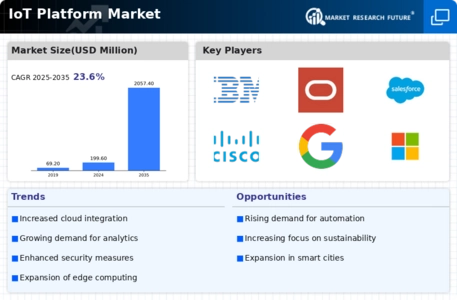
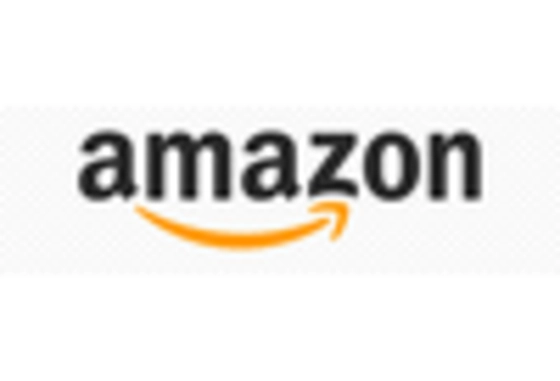
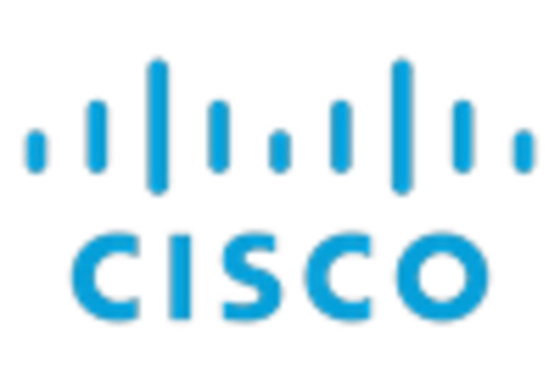
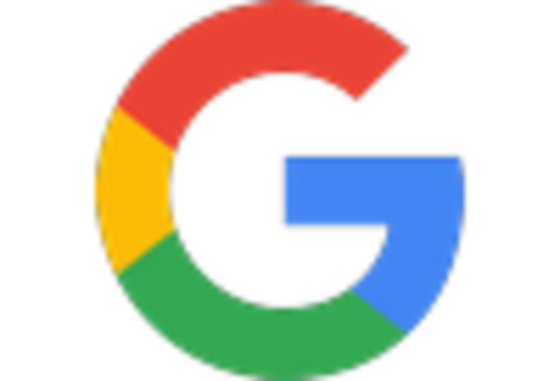


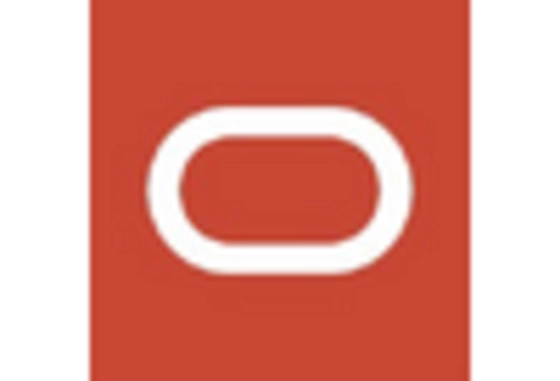

Leave a Comment